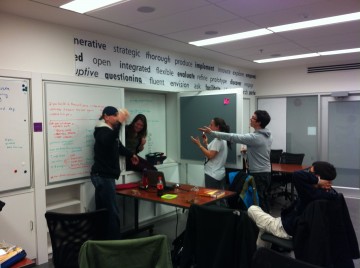This week we began the session with play dough. The idea is that we do a creative warm-up each week — designed by one of the student teams. This team made their own colourful and scented play dough. We all had floods of memories around the feel and scent especially. A fun start to the session.
This was Morten’s second session on the Creative Brain. He summarized the key messages so far — priming, remove associations, inhibition, incubation and fixation. This week focused on the Neurobiology of Creativity touching on neurotransmitters, arousal & hypnagogia, drugs, the brain areas involved, resting state and mind wandering, insight problem-solving and sleeping and dreaming.
Morten took us through the biology of the brain – the function of neurotransmitters, an overview of the research on what happens in the state of arousal or “being awake”. It is complex. We have four major systems originating in the brain stem — and when these systems are in action the receiving neural areas become sensitive and responsive to incoming signals. Interesting work on the effects of marijauna — no correlation to increased creativity.
Morten’s PhD research uses neuro-imaging — to see what parts of the brain are active during what kinds of mental activity. The take-home messages for this session are:
- Eat fewer sweets and more bananas.
- Always REM-sleep with a problem — but don’t forget that ‘chance favours only the prepared mind’.
- Don’t do drugs.
- Don’t get too aroused — and don’t work too long on the same problem. Take a break, go for a run, take a shower, or power nap.
This session ended with the introduction of the business for this module: Coloplast. The problem assigned to the students is: How can Coloplast grow its Chronic Care business? More in Week 3.
Here are students at play.
